Low Fodmap Diet for IBS (irritable bowel syndrome)- A Beginner’s Guide
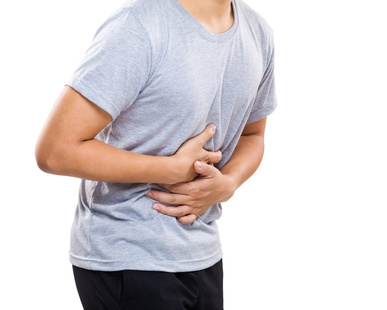
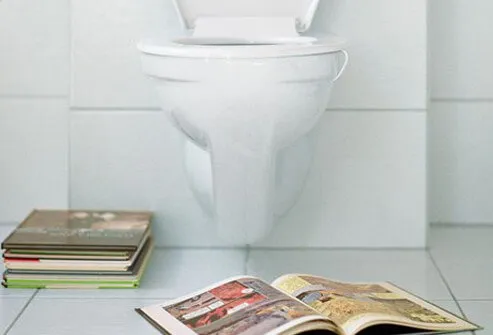
What Is Irritable Bowel Syndrome (IBS)?
Irritable bowel syndrome (IBS) is a chronic disorder in which the intestines do not work normally. Other names for IBS are spastic colon or functional bowel disease. The consequences of the malfunction of the intestines is abdominal pain that is associated with constipation, diarrhea, or constipation alternating with diarrhea. The disorder affects at least 10% of the population of North America.
IBS Symptoms
The hallmark of IBS is the presence of abdominal pain that is associated with constipation, diarrhea or both. The pain and alterations in bowel habit may be mild and not interfere with normal activities or they may be severe and limit activities. Frequent diarrhea can lead to the need to constantly be near to a bathroom.
IBS Causes
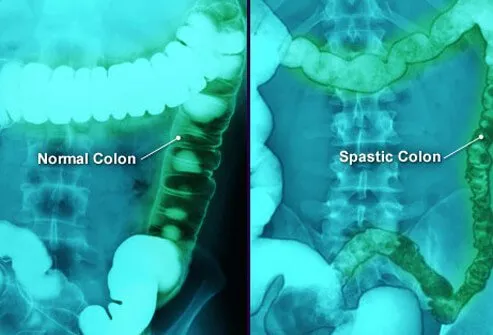
No one knows for sure what causes IBS. It is thought to be caused by nerves that control the muscles in the gut or muscles that don’t work right. This can cause the muscles in the intestines to contract in strange ways, which can cause pain, constipation, or diarrhea. There may also be more fluid going into the intestines. Even with a lens, you can’t see that the muscles in the intestines aren’t working right. The pattern of movement in the intestines may be wrong if it is observed.
Who’s at Risk for IBS?
Women are almost twice as likely as men to have IBS. The signs can start at any age, but people in their 20s are most likely to have them. It looks like cousins of people who have IBS are more likely to also have IBS. These things don’t cause IBS, but they do make the symptoms worse.
IBS Diagnosis
There is no way to tell if someone has IBS. Sometimes, the action of muscles in the intestines is studied and found to be off. The normal signs of IBS, like abdominal pain that comes with diarrhea, constipation, or both, are usually enough to make the diagnosis. People often need tests to make sure that they don’t have any other gastrointestinal or abdominal illnesses because these issues can be caused by a number of other conditions.
How IBS Impacts Daily Life
If your IBS symptoms are mild, they won’t get in the way of your daily life. When they are bad, the pain or the need to go to the bathroom may make it hard to do things. People who suffer from IBS and diarrhea should always know where the closest bathroom is. Patients may even avoid social situations because they don’t want to be seen going to the bathroom a lot.
Stress and IBS

Stress worsens the symptoms of IBS just as it worsens the symptoms of most other disorders. But stress causes few if any disorders. Nevertheless, reducing stress is one reasonable approach to improving the symptoms of IBS. Sometimes reducing stress is enough to make patients comfortable, but usually more is required especially when symptoms are severe. Troublesome symptoms of IBS can cause stress which, in turn makes the symptoms more troublesome – a vicious cycle.
IBS Triggers
For practical purposes, it is important to figure out what makes your IBS symptoms worse, whether it’s certain foods, hobbies, or medicines. Since no one food has been linked to IBS, there is no such thing as a “IBS diet.” Regardless, it might be helpful to keep a food log that can help you figure out which foods make your symptoms worse. Afterward, the things can be skipped.
IBS Treatment: Diet Changes
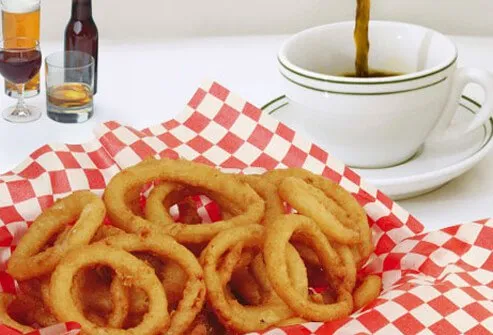
Because they change how the muscles in the intestines work, some foods may make IBS symptoms worse. For instance, caffeine may make muscles tighten. On the other hand, fatty foods can make muscles less active. Depending on what is wrong that causes the IBS, either move could make the symptoms worse. Certain food intolerances, like those to lactose or sugar, can make the symptoms of IBS worse sometimes. While they aren’t the cause of IBS, cutting them out of your diet may help your symptoms.
IBS Treatment: Probiotics

Probiotics are frequently used to treat symptoms of IBS. There are few studies showing benefit of probiotics; however, there are theoretical reasons why altering the bacteria in the intestine might modulate symptoms. Probiotics are generally safe so there is little harm in trying them. It is important to remember that with all treatments of IBS, including probiotics, there is a 20% to 40% placebo response rate, that is, there is a 20% to 40% chance that a patient who feels better taking probiotics is not actually better.
IBS Treatment: Drugs for Diarrhea
Medication is an extra or different way to treat the symptoms of IBS. The medicine is picked out based on which signs are the worst. For instance, medicines that stop diarrhea, like loperamide (Imodium) or diphenoxylate and atropine (Lomotil), work by stopping the intestines’ muscles from moving. People who are sluggish may be able to soften their stools with stool softeners and fiber.
IBS Treatment: Drugs for Constipation

Increasing the amount of fluid in the intestines can help ease constipation by making the stools softer. Fiber, stool softeners, milk of magnesia, and Miralax are some of the options. Prescription drugs like linaclotide (Linzess) and lubiprostone (Amitiza) may also help with constipation by adding more fluid to the intestines. Stimulant laxatives, like docusate (Correctol) and senna (Senokot), make the muscles in the stomach contract, which helps you go to the bathroom.
IBS Treatment: Antidepressants and Antispasmodics
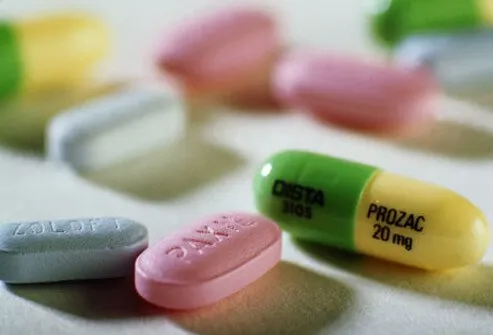
Antidepressants can be used to help people with IBS. The antidepressants are not being used as antidepressants in this case. When taken in small amounts, antidepressants can stop the nerve cells that cause pain from working. Anti-cholinergic drugs like dicyclomine (Bentyl), which relaxes the muscles in the intestines, can help, but they can also have side effects, like making constipation worse.
IBS Treatment: Peppermint Oil

Smooth muscle is what makes up the gut. Peppermint oil is one of the best ways to relax smooth muscles. People who have IBS should try peppermint oil to ease their symptoms. It has to be pure peppermint oil because fake peppermint oil won’t work. One way to take peppermint oil is as a candy that you chew or as a pill that has an enteric coating. You should talk to your doctor first, though, before taking peppermint oil.
IBS Treatment: Psychotherapy
Since stress makes IBS worse it is worthwhile to attempt stress-reduction by any means possible. One such management strategy is cognitive-behavioral therapy, a form of psychotherapy. Cognitive-behavioral therapy can reduce stress and relieve symptoms associated with IBS. It also stresses ways in which you can cope with symptoms on your own when they arise.
IBS Treatment: Hypnosis
Hypnosis also has been used to affect the subconscious state by suggesting that the symptoms of IBS go away. Some evidence supports the effectiveness of hypnosis in reducing the symptoms of IBS.
IBS Treatment: Biofeedback

Biofeedback is another means of managing the symptoms of IBS. Biofeedback teaches patients to moderate their physical state and enter a more relaxed state. This may relieve stress and improve the symptoms of IBS.
IBS Treatment: Relaxation Therapy
Meditation is a common technique for managing stress along with guided imagery, deep breathing, and other techniques. All of these techniques can help with reducing the symptoms of IBS, and, most importantly, they can be used without assistance almost anywhere.
IBS and Exercise
Exercise is a stress-reducer, and it can be used to moderate the symptoms of IBS. How it works is unclear, but it does not necessarily take vigorous exercise. Before entering any exercise program, however, you should check with your doctor.
IBS: Long-Term Prognosis
IBS is a long-term or chronic condition. It is marked by periods of greater symptoms (exacerbations) and lesser symptoms (remissions). Sometimes it is possible to uncover emotional or physical triggers for the exacerbations. If so, it may be possible to eliminate these triggers. In general, over time, the symptoms of IBS do not get worse nor do they progress to more serious conditions such as inflammatory bowel disease (IBD) or cancer.
A Beginner’s Guide to the Low-FODMAP Diet
Food is a common trigger of digestive symptoms. Interestingly, restricting certain foods can dramatically improve these symptoms in sensitive people.
In particular, a diet low in fermentable carbs known as FODMAPS is clinically recommended for the management of irritable bowel syndrome (IBS).
This article explains what a low-FODMAP diet is, how it works and who should try it.
What Are FODMAPs?
FODMAP stands for fermentable oligo-, di-, mono-saccharides and polyols
These are the scientific terms used to classify groups of carbs that are notorious for triggering digestive symptoms like bloating, gas and stomach pain.
FODMAPs are found in a wide range of foods in varying amounts. Some foods contain just one type, while others contain several.
The main dietary sources of the four groups of FODMAPs include:
- Oligosaccharides: Wheat, rye, legumes and various fruits and vegetables, such as garlic and onions.
- Disaccharides: Milk, yogurt and soft cheese. Lactose is the main carb.
- Monosaccharides: Various fruit including figs and mangoes, and sweeteners such as honey and agave nectar. Fructose is the main carb.
- Polyols: Certain fruits and vegetables including blackberries and lychee, as well as some low-calorie sweeteners like those in sugar-free gum.
Benefits of a Low-FODMAP Diet
A low-FODMAP diet restricts high-FODMAP foods.
The benefits of a low-FODMAP diet have been tested in thousands of people with IBS across more than 30 studies
Reduced Digestive Symptoms
IBS can cause a wide range of gut problems, such as stomach pain, bloating, reflux, flatulence, and the need to go to the bathroom right away.
The main sign of IBS is stomach pain, and more than 80% of people with the disease also have bloating.
Obviously, these signs can make it hard to do things. One big study even found that people with IBS said they would give up an average of 25% of their lives to not have any symptoms.
Luckily, a low-FODMAP diet has been shown to make both stomach pain and bloating much better.
Four good studies found that if you follow a low-FODMAP diet, your chances of getting rid of stomach pain and bloating are 81% and 75% higher, respectively.
Several other studies have shown that the diet may help with gas, diarrhea, and constipation.
Increased Quality of Life
People who have IBS often say that their quality of life is lower, and having severe digestive problems has been linked to this.Luckily, a number of studies have shown that the low-FODMAP diet makes life better in general.
Some evidence also suggests that a low-FODMAP diet may give people with IBS more energy, but this finding needs to be backed up by placebo-controlled studies.
Who Should Follow a Low-FODMAP Diet
A low-FODMAP diet is not for everyone. Unless you have been diagnosed with IBS, research suggests the diet could do more harm than good.
This is because most FODMAPs are prebiotics, meaning they support the growth of good gut bacteria
Also, most of the research has been in adults. Therefore, there is limited support for the diet in children with IBS.
If you have IBS, consider this diet if you:
- Have ongoing gut symptoms.
- Haven’t responded to stress management strategies.
- Haven’t responded to first-line dietary advice, including restricting alcohol, caffeine, spicy food and other common trigger foods
That said, there is some speculation that the diet may benefit other conditions, including diverticulitis and exercise-induced digestive issues. More research is underway
It is important to be aware that the diet is an involved process. For this reason, it’s not recommended to try it for the first time while traveling or during a busy or stressful period.
How to Follow a Low-FODMAP Diet
A low-FODMAP diet is more complex than you may think and involves three stages.
Stage 1: Restriction
At this stage, you must strictly avoid all things that are high in FODMAP. Read this if you don’t know which foods are high in FODMAPs.
When people start this diet, they often think they need to stay away from all FODMAPs for a long time. But this stage should only last 8 to 3 weeks. This is because FODMAPs are good for gut health and should be part of a healthy diet.
There are people who feel better in the first week and people who don’t feel better until eight weeks later. As soon as your stomach problems are under control, you can move on to the next step.
If your gut symptoms are still there after eight weeks, read the next section, “What If Your Symptoms Don’t Get Better?”
Stage 2: Reintroduction
At this time, high-FODMAP foods are slowly added back in.
This is meant to do two things:
To find out what kinds of FODMAPs your body can handle. Not many people can feel all of them.
To find out how much FODMAPs your body can handle. This level is called your “threshold level.”
In this step, you test each food for three days one at a time
It is best to do this step with the help of a trained dietitian who can show you the right things to eat. On the other hand, this app can help you figure out which things you can eat again.
It is important to remember that you need to keep eating a low-FODMAP diet during this time. So, even if you can handle a certain high-FODMAP food, you still need to limit it until stage 3.
Also, keep in mind that people with IBS can handle small amounts of FODMAPs, but not people with most food allergens.
Lastly, stomach problems can be very painful, but they won’t hurt your body in the long run.
Stage 3: Personalization
This stage is also called the “modified low-FODMAP diet.” That is, you still shouldn’t eat certain FODMAPs. But the amount and type are based on your personal tolerance, which you found in step 2.
Getting to this last stage is important if you want to increase the variety and flexibility of your food. These traits are connected to better gut health, long-term consistency, and quality of life.
There are three things you should do before embarking on the diet.
1. Make Sure You Actually Have IBS
Digestive symptoms can occur in many conditions, some harmless and others more serious.
Unfortunately, there is no positive diagnostic test to confirm you have IBS. For this reason, it is recommended you see a doctor to rule out more serious conditions first, such as celiac disease, inflammatory bowel disease and colon cancer
Once these are ruled out, your doctor can confirm you have IBS using the official IBS diagnostic criteria — you must fulfill all three to be diagnosed with IBS
- Recurrent stomach pain: On average, at least one day per week in the last three months.
- Stool symptoms: These should match two or more of the following: related to defecation, associated with a change in frequency of stool or associated with a change in the appearance of stool.
- Persistent symptoms: Criteria fulfilled for the last three months with symptom onset at least six months before diagnosis.
2. Try First-Line Diet Strategies
The low-FODMAP diet is a time- and resource-intensive process.
This is why in clinical practice it is considered second-line dietary advice and is only used in a subset of people with IBS who don’t respond to first-line strategies.
3. Plan Ahead
The diet can be difficult to follow if you are not prepared. Here are some tips:
- Find out what to buy: Ensure you have access to credible low-FODMAP food lists. See below for a list of where to find these.
- Get rid of high-FODMAP foods: Clear your fridge and pantry of these foods.
- Make a shopping list: Create a low-FODMAP shopping list before heading to the grocery store, so you know which foods to purchase or avoid.
- Read menus in advance: Familiarize yourself with low-FODMAP menu options so you’ll be prepared when dining out.
A Low-FODMAP Diet Can Be Flavorful
Garlic and onion are both very high in FODMAPs. This has led to the common misconception that a low-FODMAP diet lacks flavor.
While many recipes do use onion and garlic for flavor, there are many low-FODMAP herbs, spices and savory flavorings that can be substituted instead.
It is also worth highlighting that you can still get the flavor from garlic using strained garlic-infused oil, which is low in FODMAPs.
This is because the FODMAPs in garlic are not fat-soluble, meaning the garlic flavor is transferred to the oil, but the FODMAPs aren’t.
Other low-FODMAP suggestions: Chives, chili, fenugreek, ginger, lemongrass, mustard seeds, pepper, saffron and turmeric
Can Vegetarians Follow a Low-FODMAP Diet?
A well-balanced vegetarian diet can be low in FODMAPs. Nonetheless, following a low-FODMAP diet if you are a vegetarian can be more challenging.
This is because high-FODMAP legumes are staple protein foods in vegetarian diets.
That said, you can include small portions of canned and rinsed legumes in a low-FODMAP diet. Serving sizes are typically about 1/4 cup (64 grams).
There are also many low-FODMAP, protein-rich options for vegetarians, including tempeh, tofu, eggs, Quorn (a meat substitute) and most nuts and seeds
A Sample Low-FODMAP Shopping List
Many foods are naturally low in FODMAPs
Here is a simple shopping list to get you started.
- Protein: Beef, chicken, eggs, fish, lamb, prawns and tofu
- Whole grains: Brown rice, buckwheat, maize, millet, oats and quinoa
- Fruit: Bananas, blueberries, kiwi, limes, mandarins, oranges, papaya, pineapple, rhubarb and strawberries
- Vegetables: Bean sprouts, bell peppers, carrots, choy sum, eggplant, kale, tomatoes, spinach and zucchini
- Nuts: Almonds (no more than 10 per sitting), macadamia nuts, peanuts, pecans, pine nuts and walnuts
- Seeds: Linseeds, pumpkin, sesame and sunflower
- Dairy: Cheddar cheese, lactose-free milk and Parmesan cheese
- Oils: Coconut oil and olive oil
- Beverages: Black tea, coffee, green tea, peppermint tea, water and white tea
- Condiments: Basil, chili, ginger, mustard, pepper, salt, white rice vinegar and wasabi powder
Additionally, it’s important to check the ingredients list on packaged foods for added FODMAPs.
Food companies may add FODMAPs to their foods for many reasons, including as prebiotics, as a fat substitute or as a lower-calorie substitute for sugar.
What If Your Symptoms Don’t Improve?
The low-FODMAP diet does not work for everyone with IBS. Around 30% of people don’t respond to the diet
Fortunately, there are other non-diet-based therapies that may help. Talk to your doctor about alternative options.
That said, before you give up on the low-FODMAP diet, you should:
1. Check and Recheck Ingredient Lists
Prepackaged foods often contain hidden sources of FODMAPs.
Common culprits include onion, garlic, sorbitol and xylitol, which can trigger symptoms even in small amounts.
2. Consider the Accuracy of Your FODMAP Information
There are many low-FODMAP food lists available online.
However, there are only two universities that provide comprehensive, validated FODMAP food lists and apps — King’s College London and Monash University.
3. Think About Other Life Stressors
Diet is not the only thing that can aggravate IBS symptoms. Stress is another major contributor
In fact, no matter how effective your diet, if you are under severe stress, your symptoms are likely to persist.
![The Delicious Colon Relief Recipes : The Ultimate Guide for IBS Relief by 120 amazing Low - FODMAP Recipes ( for Beginners ) (The Quick IBS and Diverticulitis Cure Book 4) by [Dr Kotb]](https://cdn.fs.teachablecdn.com/ADNupMnWyR7kCWRvm76Laz/https://m.media-amazon.com/images/I/51hJsVi7IaL.jpg)



